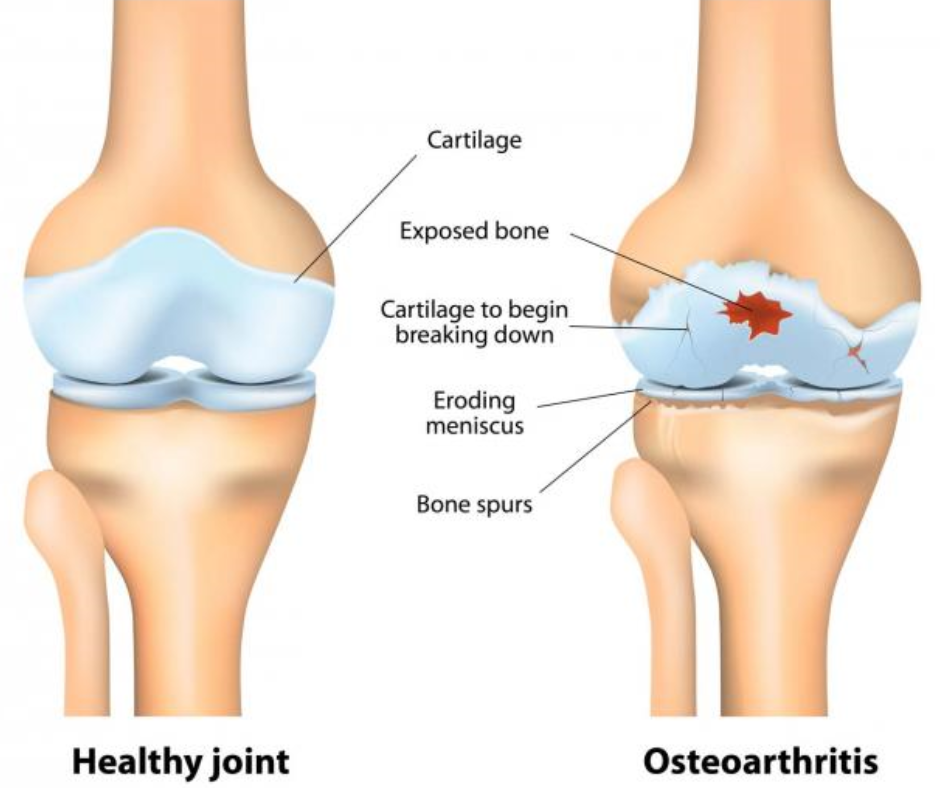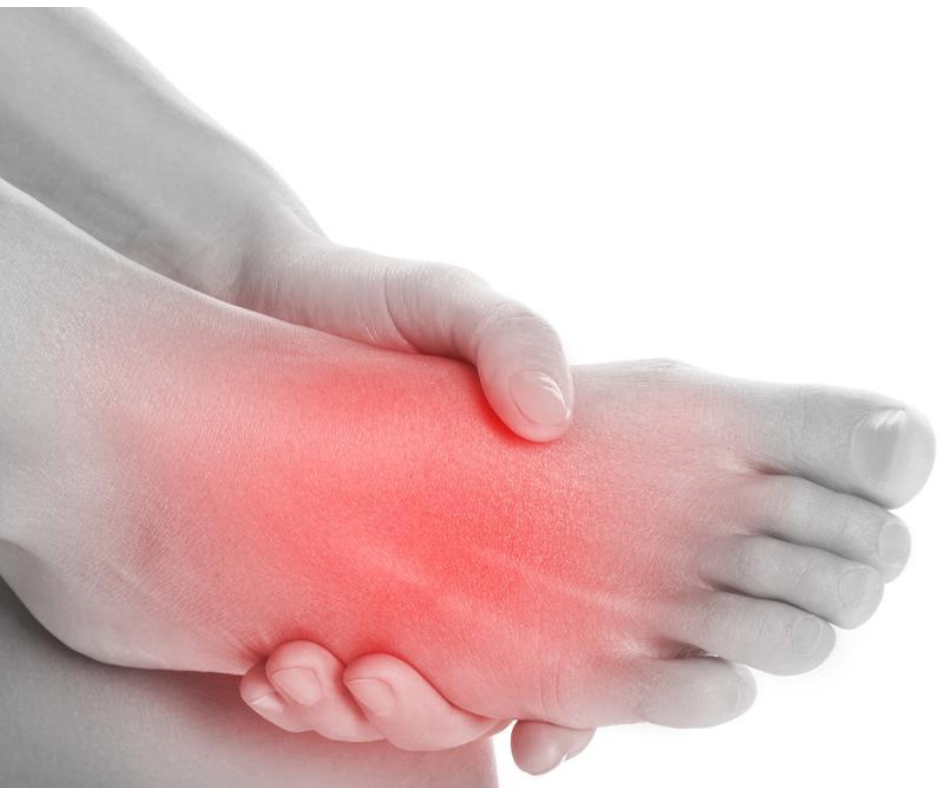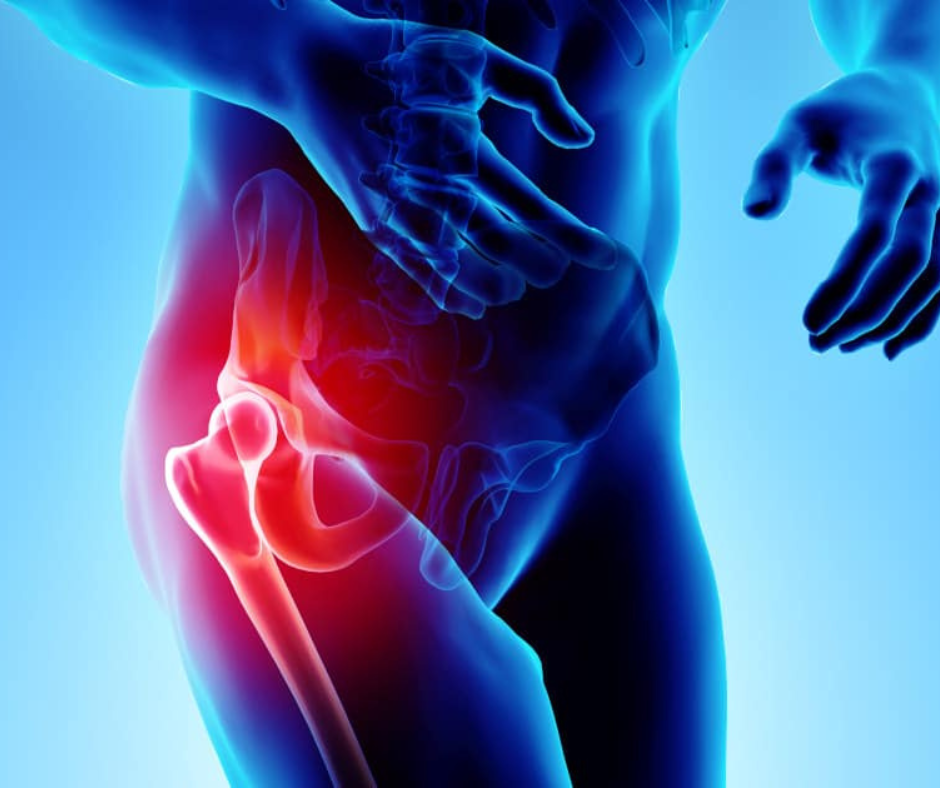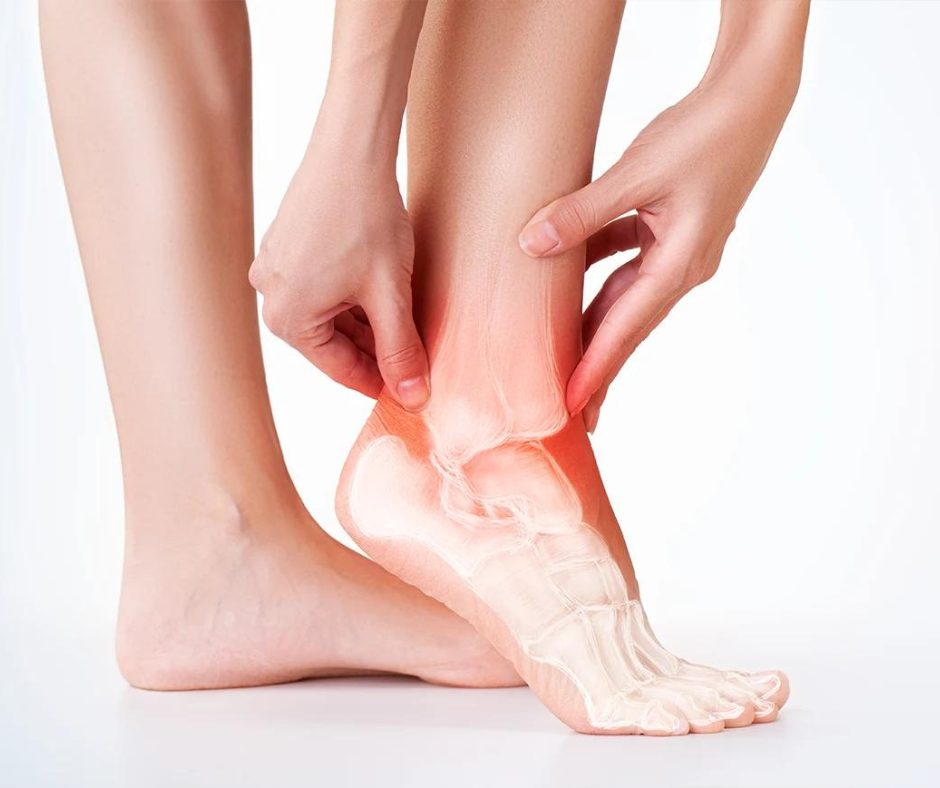Osteoarthritis Treatment in India

Alkem and Stempeutics Launch Stemone for Treatment of Knee osteoarthritis
Stem Cell Treatment for the Knee, Hip and other Joints:
Osteoarthritis treatment in India is of two kinds: conventional medication and joint replacement and advanced medication including stem cell therapy.
The pathophysiology of osteoarthritis (OA) involves an imbalance between anabolic and catabolic/inflammatory pathways, which arises from mechanical or biological damage to the knee joint’s microarchitecture. This imbalance is further aggravated by the aging process, resulting in a diminished capacity of the cartilage matrix to maintain homeostasis when subjected to stress.
Scientific research has demonstrated that mesenchymal stem cells (MSCs) possess the ability to release anti-inflammatory factors, thereby promoting healing and reducing pain. In the context of joint conditions, studies indicate that injecting MSCs into the affected joint may contribute to pain relief, reduction of swelling, and improvement in joint mobility. Furthermore, stem cells can be utilized in laboratory settings to create artificial tissues using a technique known as tissue engineering.Mesenchymal stem/stromal cells (MSCs) have shown promising results by targeting degenerated cartilage. In early-phase clinical trials, intra-articular (IA) administration of MSCs has demonstrated pain reduction and cartilage protection or healing.
Following administration, mesenchymal stem cells (MSCs) exhibit a short duration of presence within the target tissue. However, despite their transient nature, MSCs retain the capacity to provide chondroprotective and immunomodulatory effects. Notably, their therapeutic effectiveness is believed to be primarily mediated through paracrine mechanisms rather than long-term engraftment.
There are various hospitals and private clinics doing stem cell therapy for osteoarthritis in India andt Chaitanya stem cell center is the top orthopedic hospital in India.

What is Osteoarthritis?
Osteoarthritis, a prevalent type of arthritis, has a global impact, affecting a significant number of individuals. This condition arises when the protective cartilage, responsible for cushioning the bone ends, gradually deteriorates. Osteoarthritis is also known as degenerative joint disease (DJD).
While osteoarthritis can impair any joint, it predominantly manifests in the hands, knees, hips, and spine. By adopting an active lifestyle, maintaining a healthy weight, and undergoing stem cell treatment for osteoarthritis, it is possible to slow down and then pause the progression of the disease and enhance pain management and joint functionality and over a period of time be absolutely pain free without the use of surgical interventions, this is one of the best osteoarthritis treatment in India.
In a state of joint health, a layer of resilient yet smooth and lubricated tissue known as cartilage covers the bone surfaces, facilitating smooth and unrestricted movement. However, when osteoarthritis develops within a joint, a portion of the cartilage thins out, resulting in a roughened surface. Consequently, the affected joint experiences a reduction in its ability to move fluidly and seamlessly. Osteoarthritis treatment in India is comparable to world class health facilities.
Chaitanya stem cell centre, India, is one of the best osteoarthritis treatment hospitals in India. We provide unparalleled patient care and hospital experience for osteoarthritis treatment in India. We have top-notch specialists and cutting- edge technology under one roof, thus ensuring quality treatment to patients.
Osteoarthritis can be categorized into two primary types:
This is the most common form and is characterized by a generalized impact on various joints. It primarily affects the fingers, thumbs, spine, hips, knees, and the great (big) toes.
This type occurs in conjunction with a pre-existing joint abnormality. The underlying causes can include joint injuries or trauma resulting from repetitive or sports-related activities. It can also be associated with inflammatory arthritis such as rheumatoid arthritis, psoriatic arthritis, or gout. Additionally, secondary osteoarthritis can arise due to infectious arthritis, genetic joint disorders like Ehlers-Danlos syndrome (also known as hypermobility or “double-jointed”), congenital joint disorders, or metabolic joint disorders.
Signs and Symptoms of Osteoathritis:
Osteoarthritis is a progressive condition with symptoms that typically emerge gradually and worsen over time. The following signs and symptoms are commonly associated with osteoarthritis:
Affected joints can experience pain during or after movement.
Joint stiffness is often most pronounced upon waking up or after periods of inactivity.
The affected joint may exhibit tenderness when light pressure is applied directly or near it.
There may be limitations in the joint’s range of motion, resulting in reduced flexibility.
Some individuals may perceive a grating sensation within the joint, accompanied by audible popping or crackling sounds. These sensations can be attributed to the formation of bony growths known as osteophytes around the affected joint.
Soft tissue inflammation surrounding the joint can lead to localized swelling.

Affected Joints in Osteoarthritis: Understanding the Areas of Impact
Osteoarthritis can manifest in various joints, with the knees, hips, hands, spine, and big toes, ankles, being the most commonly affected areas. Osteoarthritis treatment in India is by and large the same for all kind of joints, the manifestation of each joint is slightly different.

1) The Knee :
Osteoarthritis is the most prevalent form of arthritis, commonly affecting the knee joint. It occurs when the body’s natural repair process for joints leads to changes in their shape and structure.
Joints, such as the knee, are where two or more bones meet, with the knee also including the patella or kneecap. Cartilage, a smooth and protective surface covering the ends of bones, allows frictionless movement and stress protection.
The knee joint contains menisci or meniscus, which distribute weight evenly, and cartilage beneath the kneecap. Osteoarthritis causes cartilage thinning, roughening joint surfaces, resulting in reduced smoothness, pain, and stiffness. While it can affect anyone, it is more prevalent in women over 50. Factors such as injuries, joint problems like gout, genetic predisposition, and obesity contribute to the development of osteoarthritis, particularly due to increased strain on weight-bearing joints like the knees.
Treatment for osteoarthritis of knee earlier included only rehabilitation with physiotherapy, occupational therapy or exercises and medical management. Earlier the only option available was joint replacement surgery but with stem cell treatment for osteoarthritis of the knee a whole era of minimally invasive treatment has begun.
2) The Hip:
Hip arthritis occurs when the cartilage in the hip joint deteriorates. The hip joint is a ball-and-socket joint, with the ball located at the top of the thigh bone (femoral head) and the socket (acetabulum) separated by cartilage. This cartilage acts as a smooth coating, allowing the ball to move and rotate effortlessly within the socket during leg movements. The outer rim of the socket is lined with a strong cartilage called the labrum, which provides stability.
When the hip cartilage is damaged, it becomes rough, leading to a narrowing of the space between the bones. In advanced stages, the bones can rub against each other, causing pain and stiffness with any movement. Friction between the bones can also result in the formation of bone spurs, which are abnormal bone growths along the edges that alter the bone’s shape. Hip osteoarthritis treatment includes Medications, Physical therapy, Assistive devices, Lifestyle modifications, Injections, Surgical intervention.
Evidence-based approach to reduce pain with the best osteoarthritis treatment in India. Achieving a pain-free walking experience and being free of analgesics and managing multiple health conditions with stem cell therapy.


3) The Foot and Ankle :
In a healthy ankle joint, the bone surfaces that come together are cushioned and protected by cartilage. However, in cases of ankle osteoarthritis, this protective cartilage gradually deteriorates, leading to a decrease in the space between the bones. Consequently, the bones begin to rub against each other, causing the development of painful bone spurs.
Ankle osteoarthritis is a relatively uncommon condition, affecting approximately 1% of the population. Recent research from 2018 has indicated that the primary cause of this condition is often trauma, particularly rotational injuries that result in ligament sprains and bone fractures. These types of injuries are typically observed in younger individuals.
Ankle osteoarthritis treatment includes :
NSAIDs and analgesics can alleviate pain and reduce inflammation.
Exercises, modalities, and therapies improve ankle mobility, muscle strength, and stability.
Ankle braces, orthotic inserts, or specialized footwear provide support and improve mobility.
Maintaining a healthy weight reduces stress on the ankle joint.
Corticosteroid or hyaluronic acid injections relieve pain and inflammation, improving joint function.
Ankle fusion or replacement surgeries are considered for severe cases to alleviate pain and restore mobility.
But with Chaitanya stem cell center being one of the best hospital for osteoarthritis treatment in India, new treatments for osteoarthritis of the knee , hip, hand and wrist, ankle etc have been practiced under Dr. Anant Bagul top Orthopedician in Pune.
Let Our Patient Speak For Us
My Name Is Parag 45 yers olḍ I am From Chennai I have Knee pain in both ĺegs for the last 15 years and the pain is on highside even if i walk for 200 metres. we tried all type of treatment like physio therapy, regular exercise but no any effect on may pain & problem. I was heard about the treatment of Stem cell from my close friend. After Video consultation with Dr. Bagul. I Decided to under take a Stem-cell Treatment by Dr. Anant Bagul. after taking 4 Doses of stem cell. Improvement within a 7-8 Days.
“I am very happy and impressed with the treatment. thank You Universal hospital Doctor & Team.

Knee Ostieoarthritis
Frequently Asked Questions
In conventional medicine Self-care, medication , therapies and surgical intervention is the only answer to this question , but with extensive research and trials stem cell therapy has been found to have a higher potential of cure in osteoarthritis cases.
Chaitanya Stem cell center is one of the best hospitals for osteoarthritis treatment in India
At Chaitanya stem cell center we have treated various cases of osteoarthritis of knee and hips with minimally invasive procedure of stem cell treatment, hence can be said to be the most effective osteoarthritis treatment in India.
The latest technology used in osteoarthritis treatment in India is stem cell therapy as its surgical intervention is low hence the scars , stitches hassle is saved.
Osteoarthritis is the most common form of arthritis, affecting millions of people worldwide. It occurs when the protective cartilage that cushions the ends of the bones wears down over time.
Osteoarthritis is a disease of the joint(bones) and not of the muscles, usually affected joints are joints of the fingers, base of the thumbs, neck, lower back, big toes, hips, and knees
- Loo SJQ, Wong NK. Advantages and challenges of stem cell therapy for osteoarthritis (Review). Biomed Rep. 2021;15:67.
- Data on file.
- Thej C, Gupta PK. The role of mesenchymal stromal cells in the management of osteoarthritis of the knee. In: Al-Anazi KA, editor. Update on mesenchymal and induced pluripotent stem cells. London: IntechOpen. 2020.
- Zha K, Li X, Yang Z, Tian G, Sun Z, Sui X, et al. Heterogeneity of mesenchymal stem cells in cartilage regeneration: from characterization to application. npj Regen Med. 2021;6:14.
- Zhang X, He J, Wang W. Progress in the use of mesenchymal stromal cells for osteoarthritis treatment. Cytotherapy. 2021;23:459–70.
- Northeast Knee Joint Institute Platelet-Rich Plasma (Post-Procedure) Guidelines. Available from:
https://nkjinstitute.com/wp-content/uploads/2019/03/PRP-Post-Procedure-Guidelines.pdf Accessed on 19 Sep 2022.

